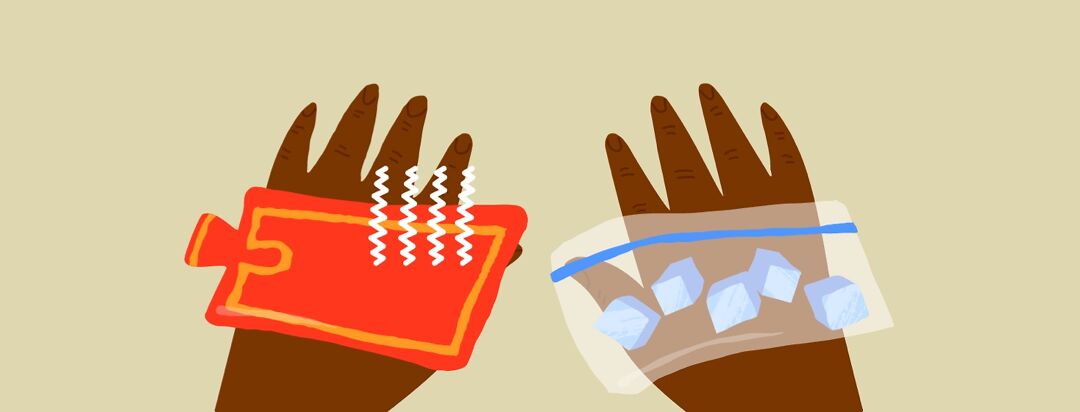RA Pain: Ice Versus Heat
For as long as I can remember, I've found that non-medicinal methods of managing my RA have been just as important as the medication I take (currently Remicade). I've used braces and topical creams like Biofreeze or Tiger Balm. I've used foam rolling, gentle stretching, and moderate exercising. I've taken supplements and made dietary changes, and I've used temperature changes in the management of my disease.
Heat therapy can soothe soreness and stiffness
Temperature changes, you may ask?
A few years ago, I discovered the huge benefit of a heated blanket for my joints (I'll share more about that here), and I still use it every night. I also rely on hot showers when I wake up stiff or hurting; it seems to loosen me up a little bit. Heat therapy increases blood flow to your muscles, relaxing them and reducing the pain coming from the stiffness.1
For me, it seems that the heat helps to reduce some of the initial pain I experience, and many mornings I don't want to get out of the shower because it feels like a little bit of temporary relief. Other things I've tried include steam rooms, saunas, and, when available, hot tubs for warmth — and my body always feels looser and less painful (even if just a little) afterwards.
The benefits of cold therapy
Then, there's the opposite — cold. I've found, personally, that cold packs are better for reducing inflammation or for more acute pain. The cold reduces blood flow to your joints, helping with swelling and even reducing stiffness. It also slows down pain signals to the brain.1
The best part of this is you can do it almost wherever you are — you can use items you already have at home, like frozen vegetables or ice in a sealed plastic bag. I never travel without Ziploc bags for this reason alone — every hotel has an ice machine! The 20 minutes on, 20 minutes off recommendation seems to work well for me, and I use this combination more often than I have previously realized.
It's less than ideal when the Midwest temperatures are in the negatives, but we gotta do what we gotta do, right?
Which is better: heat or cold?
There truly is not one answer, as they both serve different purposes, and there are some days in which I use both modalities to help my joints, especially when I'm in a flare. I know several community members have spoken on both topics, and I think there's validity to them.
Some people find heat better than ice, and others find ice better than heat. It depends on your body, your condition, and your personal responses to the temperature treatment. I'm someone who generally runs warm, so I don't mind icing, but when I'm really hurting, it seems like my body needs the initial release using heat before it's ready for the constriction of ice. I've also tried cryotherapy, which is a short 3-minute stint in a very cold chamber, but I felt like this was too much full-body cold to manage.
I'd love to know if you've tried either heat or ice therapy, and if you have any suggestions n addition to the ones I've shared here.

Join the conversation